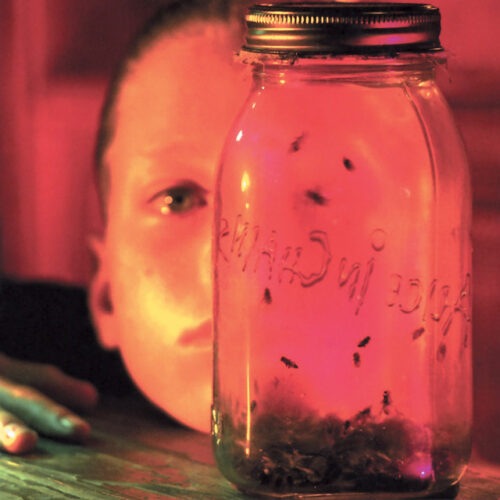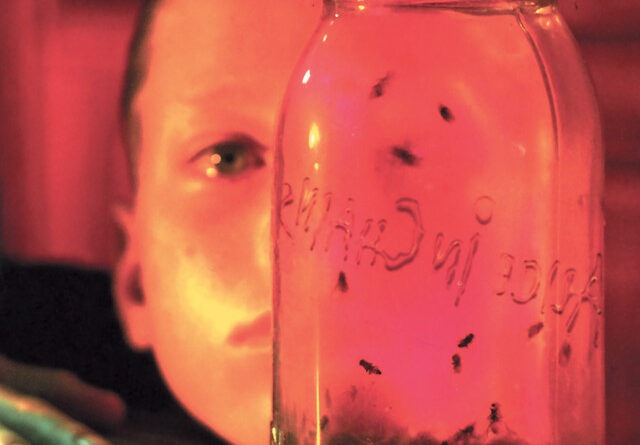HEAVY MUSIC HISTORY: The First Chart-Topping EP
When ALICE IN CHAINS released their third studio EP, Jar Of Flies, at the start of 1994, the level of success that it would harbor was unexpected. It would be the second acoustic EP for them to release, after 1992’s Sap, and would signal the start of their mainstream success. It was the first EP in music history to debut at No. 1 on the Billboard 200 chart, with the first week sales exceeding 141,000 copies in the US. The record was self-produced, written and recorded over just one week at London Bridge Studio in Seattle.
Following their extensive 1993 world tour and speaking to Hit Parader, singer Layne Staley said that the band “just wanted to go into the studio for a few days with our acoustic guitars and see what happened… We never really planned on the music we made at that time to be released, but the record label heard it and they really liked it.” Columbia Records clearly knew something the band didn’t as the EP was nominated for two Grammy Awards in 1995, one for Best Recording Package and one for Best Hard Rock Performance for I Stay Away.
Jar Of Flies was ALICE IN CHAINS’ first step into the mainstream and signaled a new era in the ever-changing landscape of the music industry. Not only was it received well by critics, but the numbers speak for themselves. It was certified quadruple platinum in the US (where it sold over 2 million copies in its first year of release), double platinum in Canada, and silver in the UK, making it among one of the band’s most successful releases. It was their first release to top the Billboard charts and the first EP to achieve such a feat. It showed bands that you don’t necessarily have to slog away to create a 10-track album to be able to reap the rewards and success usually associated with such a release.
The main difference between an EP and full album (LP, or ‘Long Play’), is the number of songs included within the track list. LPs consist of anywhere from 7 to 20 songs, whilst EPs consist of generally 4 to 6 tracks. Bands tend to use more tracks to develop a story. An album doesn’t need to have a concept to be able to weave an intricate tale of emotions, instead the sheer amount of subject matter to listen to allows the listener to garner their own reactions and develop their own meanings for individual songs and the release as a whole. An EP, however, should never be just a collection of random tracks. It should showcase the musical diversity of an artist and their ability to capture attention and provoke emotions – the shorter length means they have less opportunity to do so.
Releasing an EP wasn’t exactly a novel act in the 90s when Jar Of Flies was released, but it was still a rarer occurrence than bands choosing to release a full-length album. Labels ruled the industry 30 years ago, but today bands find less of a need for recording contracts and tend to do the work themselves, choosing to surround themselves with PR professionals and marketing agents. This way, they can release what they like and not bow to the pressure of a label holding a contract over their heads.
Today, the decision to release an EP over an album is influenced by an infinite number of factors, though there are some that are more prevalent than others with the two front-runners being time and money. Studio hire is extremely expensive and paired with the rest of the necessities required for a successful release, bands are often left largely out of pocket. Releasing an EP means less tracks need to be recorded, so less time and money are spent in a studio. The shorter track list generally means that bands can get the music recorded and released in shorter time spans.
It’s no secret that in the 30 years since Jar Of Flies was released; technology has taken over every single aspect of our lives. As a result, the attention spans of audiences have diminished and become a lot shorter, so bands and other industry professionals see this as more reason to release an EP. Audiences do not have the same patience or attention span to sit and listen to a full length 10-track album, so a shorter EP seems the logical release choice for artists to grab at their dwindling attention while they have it.
EPs also appeal to the largely online presence of today’s music fans. There is an excess of music available today, making it difficult for audiences to choose what they want to listen to. Many are more comfortable in committing to an EP first, its shorter more concise time frame giving them less worries about ‘wasting time’ on an album that they may not like. On-demand streaming services have been the most popular form of music consumption since 2017 – if listeners are looking for new music, then this is where they will find it. Spotify alone has over 100 million songs live on its system. Competition among artists will always be tight, but many have realized that listeners wading through streaming services are far more likely to commit to an EP over an album if they do not yet know an artist.
A study produced using data from Ditto Music has shown that over the past five years the number of album releases has seen a consistent annual drop. While albums made up 35% of their releases in 2016, their popularity has dropped significantly with albums making up just 9.7% of releases in 2021 – that’s a decrease of over 25%. Alternatively, EP releases saw continuous growth during the same five-year period, making a huge 90.3% of total releases in 2021.
In an industry that was so heavily focused on recording contracts and album releases, Jar Of Flies‘ release and subsequent success arguably revolutionised the music industry and how we consume music as an audience. It showed everyone from the artists themselves to label executives that you don’t have to release a full-length album to reap the rewards and success that they often bring. Audiences’ preferences and needs have changed, with bands evolving to match them. Jar Of Flies was just the beginning.

Jar Of Flies was originally released on January 25 1994 via Columbia Records.
Like ALICE IN CHAINS on Facebook.

